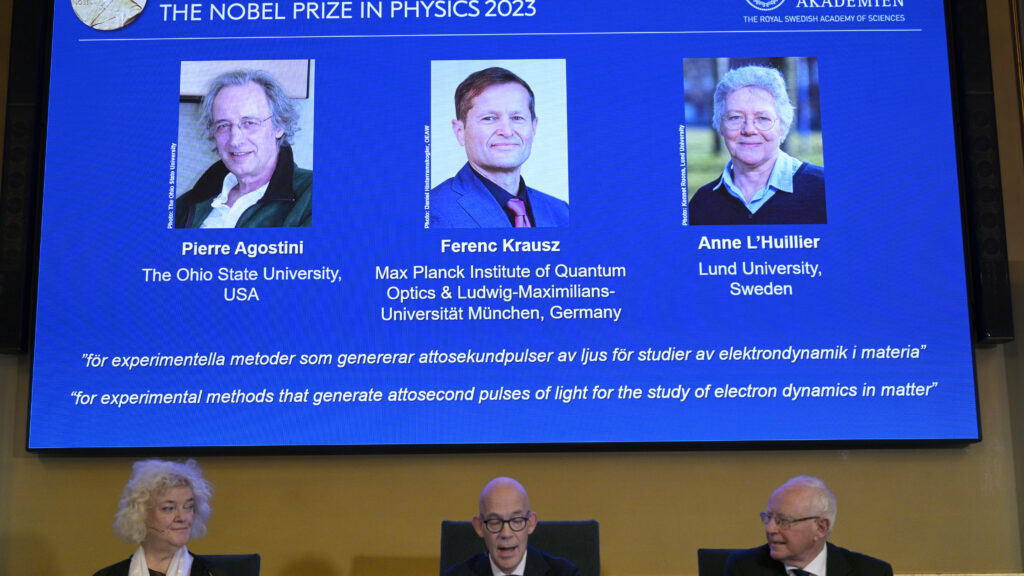LONDON — Three scientists whose work on electrons widened the world’s understanding of the particles’ behavior inside atoms and molecules won the 2023 Nobel Prize in physics on Tuesday.
In health care, their research is being applied to improve diagnostics, with the potential to create tests that can detect minute changes in the level of molecules in the blood.
advertisement
The award went to Pierre Agostini of the Ohio State University, Ferenc Krausz of the Max Planck Institute of Quantum Optics in Germany, and Anne L’Huillier of Sweden’s Lund University. They will split 11 million Swedish kronor, about $1 million, and have their names added to a list of physics Nobel winners that prior to this year included 221 laureates, only four of whom are women.
The scientists were recognized for their experimental methods that create flashes of light that are measured in attoseconds — quintillionths of a second. Their work has enabled scientists to study how electrons move and swap energy, which happens so quickly that it would be impossible to study without the laureates’ breakthroughs.
The award was announced by Hans Ellegren, secretary general of Royal Swedish Academy of Sciences, Tuesday morning in Stockholm.
advertisement
One application of the research is in medicine, where attosecond pulses could be used to create new ways of detecting diseases in their earliest stages — something Krausz and his team are pursuing.
Such rapid pulses could allow for the “molecular fingerprinting of biological samples,” as Mats Larsson, a member of the Nobel committee for physics, described it at the award announcement.
The idea would be to take a blood sample from a patient and expose it to a very short infrared pulse. That pulse would cause all the molecules in the sample to vibrate in specific, telltale ways, which researchers could measure to detect exactly what was in the sample. The real benefit might not be to identify all the molecules, but to track even subtle changes.
“By doing this, there is the hope in the future that you will be able to capture whether a person has developed, for example, lung cancer,” Larsson explained. If diseases like cancer can be diagnosed early, treatments are more likely to work.
In a paper published last year, Krausz and colleagues detailed their development of that type of electric-field molecular fingerprinting, which they wrote was a new “analytical technique to uncover characteristic molecular traces of diseases in blood samples.”

